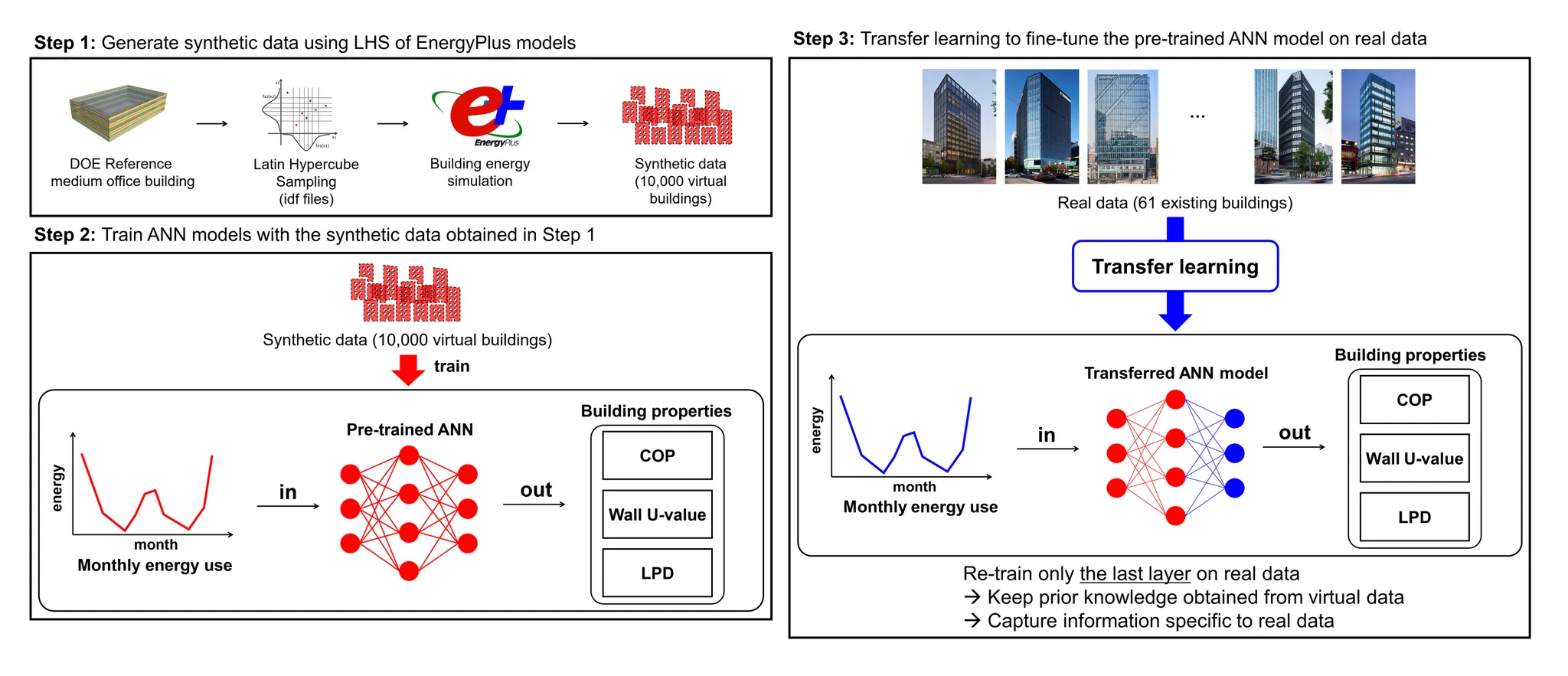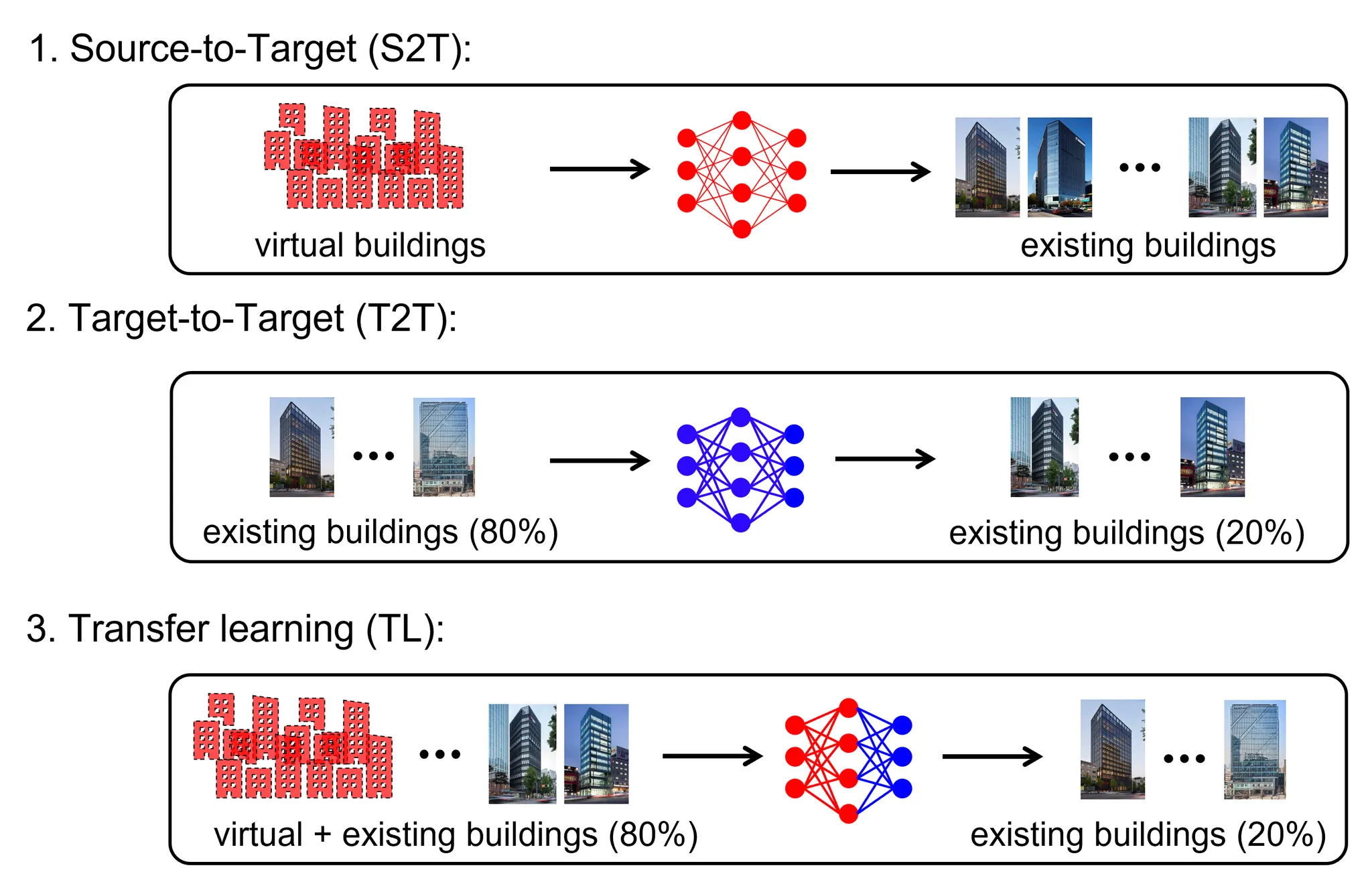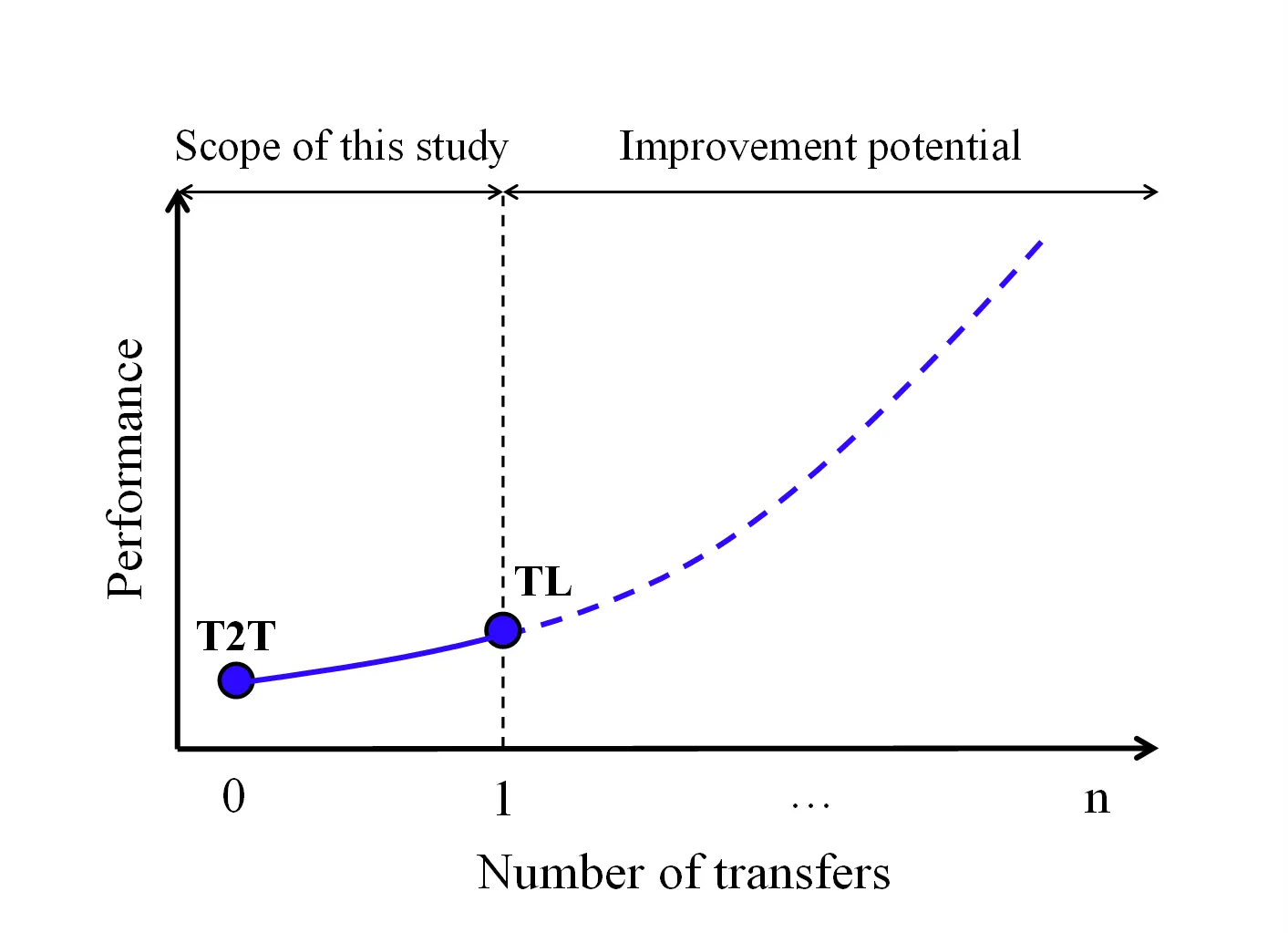•
Abstract
This study proposes a transfer learning (TL)-based inverse modeling to identify unknown building properties. This study examines the transfer from virtual buildings to existing buildings, especially for identifying wall U-value, HVAC efficiency, and lighting power density. For this purpose, synthetic data was generated from simulation results of sampled EnergyPlus models, and then we developed artificial neural network (ANN) models using this data. By adopting TL, the ANN models were transferred to the domain of existing buildings, and the performance of TL was tested on 61 existing buildings. It was found that the transferred ANN models can rapidly identify unknown factors in existing buildings. It is noteworthy that data collected from EnergyPlus simulation runs can improve the performance of a data-driven model through TL. It is expected that the use of TL enables the developed model to be reusable for another group of buildings with improved performance and reduced training time.
•
Workflow
•
Baseline vs. proposed method (TL)
•
Findings
◦
the data-driven model trained only with virtual buildings’ data cannot be directly used for existing buildings, as we expected. However, the models trained with data of both virtual and existing buildings through TL significantly outperform the models trained only with data of existing buildings.
◦
The TL procedure can be conducted in a computationally efficient manner (about 16 seconds in this study), because only a few parameters (17 parameters in this study) are re-trained, i.e. easily scalable to a large group of buildings.
◦
Data collected from the simulation results of a physics-based model (e.g., EnergyPlus) can be utilized to improve the performance of a data-driven model by TL.
◦
The performance achieved in this study can be further improved by re-transferring the developed model to other buildings. In other words, the developed TL models in this study can be reused as a pre-trained model and transferred to another group of buildings, while maintaining useful knowledge captured from buildings used in this study (See Figure below).
Expected performance improvement of transfer learning according to number of transfers




